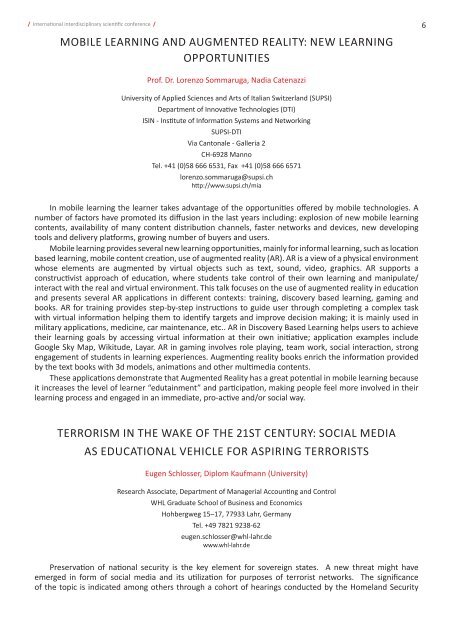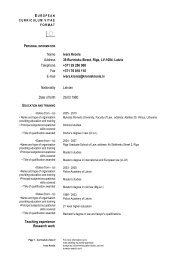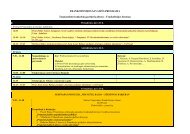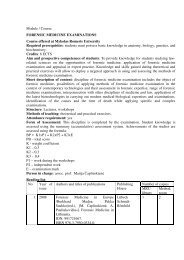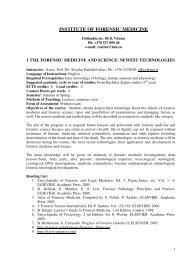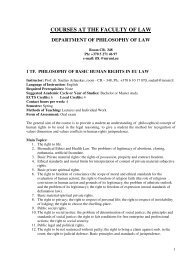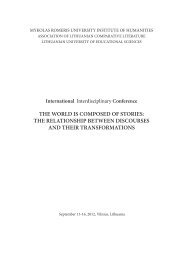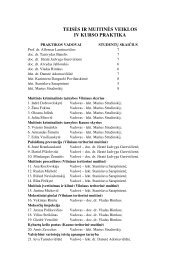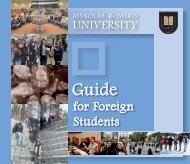SOCIAL MEDIA: CHALLENGES AND OPPORTUNITIES FOR ...
SOCIAL MEDIA: CHALLENGES AND OPPORTUNITIES FOR ...
SOCIAL MEDIA: CHALLENGES AND OPPORTUNITIES FOR ...
You also want an ePaper? Increase the reach of your titles
YUMPU automatically turns print PDFs into web optimized ePapers that Google loves.
International interdisciplinary scientific conference /<br />
MOBILE LEARNING <strong>AND</strong> AUGMENTED REALITY: NEW LEARNING<br />
<strong>OPPORTUNITIES</strong><br />
Prof. Dr. Lorenzo Sommaruga, Nadia Catenazzi<br />
University of Applied Sciences and Arts of Italian Switzerland (SUPSI)<br />
Department of Innovative Technologies (DTI)<br />
ISIN - Institute of Information Systems and Networking<br />
SUPSI-DTI<br />
Via Cantonale - Galleria 2<br />
CH-6928 Manno<br />
Tel. +41 (0)58 666 6531, Fax +41 (0)58 666 6571<br />
lorenzo.sommaruga@supsi.ch<br />
http://www.supsi.ch/mia<br />
In mobile learning the learner takes advantage of the opportunities offered by mobile technologies. A<br />
number of factors have promoted its diffusion in the last years including: explosion of new mobile learning<br />
contents, availability of many content distribution channels, faster networks and devices, new developing<br />
tools and delivery platforms, growing number of buyers and users.<br />
Mobile learning provides several new learning opportunities, mainly for informal learning, such as location<br />
based learning, mobile content creation, use of augmented reality (AR). AR is a view of a physical environment<br />
whose elements are augmented by virtual objects such as text, sound, video, graphics. AR supports a<br />
constructivist approach of education, where students take control of their own learning and manipulate/<br />
interact with the real and virtual environment. This talk focuses on the use of augmented reality in education<br />
and presents several AR applications in different contexts: training, discovery based learning, gaming and<br />
books. AR for training provides step-by-step instructions to guide user through completing a complex task<br />
with virtual information helping them to identify targets and improve decision making; it is mainly used in<br />
military applications, medicine, car maintenance, etc.. AR in Discovery Based Learning helps users to achieve<br />
their learning goals by accessing virtual information at their own initiative; application examples include<br />
Google Sky Map, Wikitude, Layar. AR in gaming involves role playing, team work, social interaction, strong<br />
engagement of students in learning experiences. Augmenting reality books enrich the information provided<br />
by the text books with 3d models, animations and other multimedia contents.<br />
These applications demonstrate that Augmented Reality has a great potential in mobile learning because<br />
it increases the level of learner “edutainment” and participation, making people feel more involved in their<br />
learning process and engaged in an immediate, pro-active and/or social way.<br />
TERRORISM IN THE WAKE OF THE 21ST CENTURY: <strong>SOCIAL</strong> <strong>MEDIA</strong><br />
AS EDUCATIONAL VEHICLE <strong>FOR</strong> ASPIRING TERRORISTS<br />
Eugen Schlosser, Diplom Kaufmann (University)<br />
Research Associate, Department of Managerial Accounting and Control<br />
WHL Graduate School of Business and Economics<br />
Hohbergweg 15–17, 77933 Lahr, Germany<br />
Tel. +49 7821 9238-62<br />
eugen.schlosser@whl-lahr.de<br />
www.whl-lahr.de<br />
Preservation of national security is the key element for sovereign states. A new threat might have<br />
emerged in form of social media and its utilization for purposes of terrorist networks. The significance<br />
of the topic is indicated among others through a cohort of hearings conducted by the Homeland Security<br />
6


